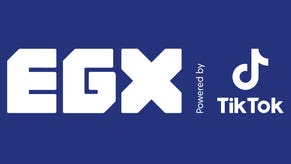What is an AXIA?
A bargain is what
The term "AXIA" may be unrelated to the insurance company of nearly-the-same name, but buying one of these stellar Athlons will certainly give you piece of mind for the next couple of years. The whole AXIA thing arose almost overnight recently when hardware e-zine Overclockers.com started experimenting in the dark art of overclocking the latest revision of the Thunderbird core. They discovered that depending on the revision (denoted by text etched into the processor's core as it came off the production line), they could attain speeds of up to 1500MHz, using simple heatsink and fan combinations like the powerful ThermoEngine. By correlating data from their tech-savvy readers, Overclockers.com were able to confirm that Athlon processors with the letters "AXIA" at the start of the second line, and a letter "Y" at the start of the third produced the best results. Our own testing has confirmed Overclockers.com's conclusion. This writer is currently using an Athlon 1.33GHz (as featured in our review of the same), which is an "AXIA Y", and it's currently ticking over at 1550MHz (10x155). The problem has been actually getting hold of the chips. You can't simply phone up Dabs or Scan and ask for them to examine the chips and handpick you an appropriate core - it doesn't work like that. Until now, the only route to AXIA stardom has been to head off to a computer fair and ask to examine the chips for yourself. A tiresome process, and one that has kept the AXIA legend out of the news for a few weeks. Fortunately though, some retailers seem to have caught on. As a result, we were very pleased this morning to accept delivery of a 1GHz AXIA Y chip from The Overclocking Store for testing. Early results are... stunning. The first thing we tried was the stock speed of our other chip, 1.33GHz. At 10x133 and default voltage settings, the machine past every test we could throw at it with flying colours. What's more, it actually functioned perfectly well using the default voltage settings at anything up to 1.4GHz. This isn't even a guaranteed chip - we asked for a random selection from The Overclocking Store's stock of AXIAs, and in-house reports from the ecommerce outfit indicate similar results across the line. Upping the core voltage to 1.85 and the I/O voltage to 3.5 (a known tweak), we were able to attain 1.45GHz (or roughly 1466MHz). With a little more tweaking, our chip hit the magic 1.5GHz (1507MHz actually) at 11x137. The Overclocking Store has a decent amount of these chips, priced competitively at £160 including VAT. We fancy they will have sold out within a few days, so if you have a KT133A motherboard and fancy a healthy boost, we recommend you head over there and relieve them of one. In the mean time, here are a couple of screen captures of WCPUID and SiSoft Sandra to keep you amused.




.png?width=291&height=164&fit=crop&quality=80&format=jpg&auto=webp)


